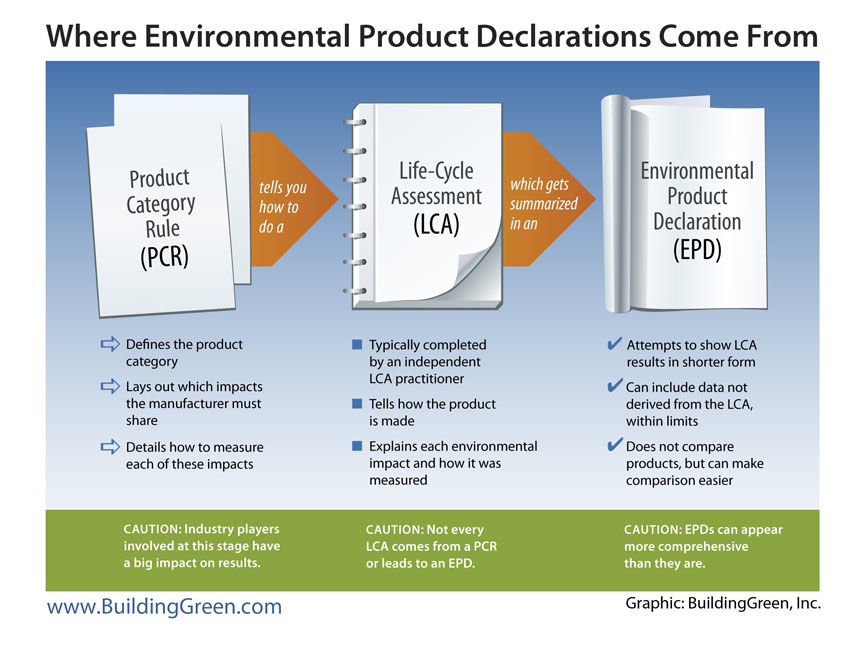Blog Post
The End of Greenwashing? Five Myths about Product Transparency
Will environmental product declarations end greenwashing for good? Not so fast.
This is Part 3 in our series on transparency.
Part 1: Why We Care About Product Transparency
Part 2: Why We Need "Nutrition Labels" for Building Products

We all want to know more about where our building products come from and what's in them. Finally, with the emergence of environmental product declarations, we're going to find out!
Aren't we?
The promise of the product transparency movement is huge, and we think this nascent trend is going to play a big role in sustainable manufacturing, design, construction, and operations in the next few years--one reason why we dedicated this month's EBN feature to product transparency.
But things aren't as simple as they might seem in this uncharted realm. There's more to environmental product declarations (EPDs) than meets the eye. And in many cases, there's less than meets the eye too. While many manufacturers are working hard to show leadership on true transparency, there is also a risk of insidious greenwashing like we've never seen before.
Five myths about environmental product declarations
- Products "earn" an EPD. Far from it. Manufacturers pay tens of thousands of dollars to get one, and the fact that a product has one tells you absolutely nothing about its environmental performance. You have to actually read the report to know whether the product is environmentally preferable or not.
- An EPD is like a nutrition label for building products. When's the last time you saw a 20-page nutrition label on your Cheerios? We're guilty of spreading this one ourselves, but it's not really true...at least not yet. Yes, the information in an EPD must follow a standard format, but that's where the similarly ends. For one thing, EPDs are completely voluntary--but also, we're very far from having an at-a-glance on-product label, although there are efforts to develop this. Here's one proposed by forward-thinking designers like Perkins + Will.
- EPDs are about science, not marketing. EPDs are backed by life-cycle assessment, and both have to be done by a third party in accordance with ISO standards. But companies can pick and choose which products they want to have EPDs for, and many will choose for marketing reasons; you won't find out how clean the company overall is by looking at one product's EPD. By contrast, InterfaceFLOR is working to develop EPDs for all its products--but Interface is definitely an exception. You may also find marketing language in some parts of the report.
- EPDs list all the ingredients in a product. Yes, the EPD has to list the materials the manufacturer uses--but you aren't likely to find out what's actually in those materials (like flame retardants or insecticides, for example) by looking at an EPD. We're working with the Healthy Building Network and a variety of manufacturers and other stakeholders to develop a health product declaration (HPD) that could help fill in the gaps. One of the things we're hoping the trend toward EPDs and HPDs will do is to help manufacturers get more information from their suppliers about potentially harmful ingredients.
- EPDs include information on toxicity and ecology. EPDs can sound a lot more comprehensive than they are. Although the life-cycle assessment behind the EPD will look at "human health" or "ecological" effects, those categories sound broader than their names justify. (See our recent coverage of a life-cycle assessment of hand-drying methods, where "ecosystem quality" was narrowly defined as "potentially disappeared fraction of plant species per square meter per year.") As far as human health goes, the HPD could help here too.
Where EPDs come from: the infographic
The success of product transparency depends on the design community knowing what an EPD is--and what it isn't.
In the process of writing the feature article, we put together an at-a-glance chart to explain where EPDs actually come from and to show a few key points you should know about them. Click above to view a larger version. Click here to download a PDF for printing.
SUPPORT INDEPENDENT SUSTAINABILITY REPORTING
BuildingGreen relies on our premium members, not on advertisers. Help make our work possible.
See membership options »Why we need EPDs, even though they're flawed
While you're printing it out, take five minutes to watch our fun video exploring what we think is so great about product transparency--including what you can do to make sure all the building product information you need is at your fingertips.
Published January 27, 2012 Permalink Citation
(2012, January 27). The End of Greenwashing? Five Myths about Product Transparency. Retrieved from https://www.buildinggreen.com/blog/end-greenwashing-five-myths-about-product-transparency



Add new comment
To post a comment, you need to register for a BuildingGreen Basic membership (free) or login to your existing profile.